Best winter destinations in India for couples and families
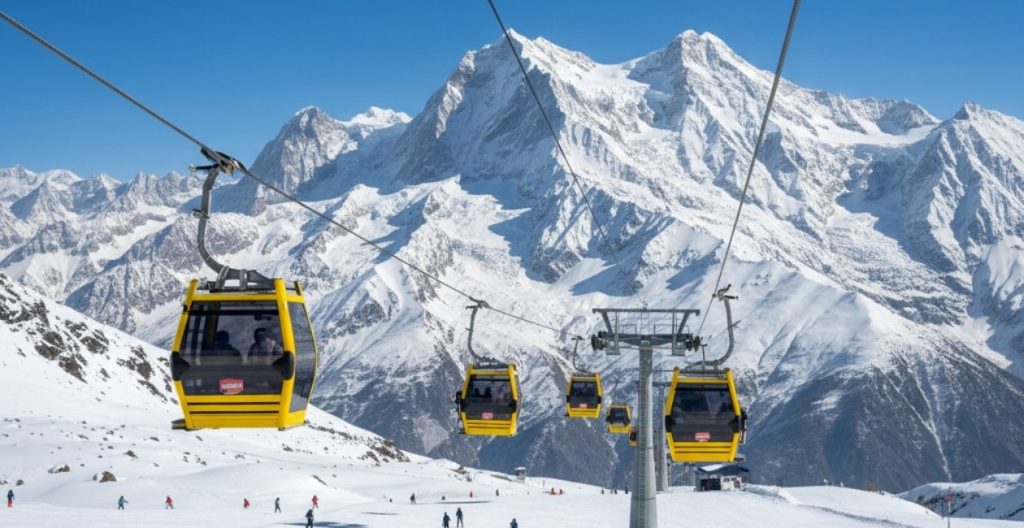
The winter season brings winter landscapes in India to life, with postcard landscapes of snow-clad peaks, misty yet lush pine dotted valleys, glistening lakes, bustling hill towns, and the warm interiors of cozy lodgings. It is the ideal time to travel with someone you love, or for a family winter break to experience some of India’s best destinations with great comfort, sights, activities, quietness or simply spend time together and share experiences. From the pristine powder of Gulmarg to the colonial splendour of Shimla to the tranquil lakes at Nainital to the best ski resorts at Auli, whatever the destination, there is always something to explore and enjoy. For couples – quiet mountain mornings, warm cabin interiors at suitable times, and stargazing strolls around the lodgings at night, should bring fond memories. Families should make winter memories by playing in the snow, conducting picturesque drives, and winter activities wherever they go! KEY TAKEAWAYS Best romantic winter destinations: Gulmarg, Manali–Solang, Shimla, Auli Best family-friendly spots: Pahalgam, Nainital, Mussoorie, Auli Best snow experiences: Gulmarg (skiing), Auli (ski slopes), Manali (adventure), Sonamarg (sledging) Warm winter getaways: Udaipur, Jaipur, Coorg (optional later sections) Top budget-friendly options: Dhanaulti, Kufri, Chopta, Patnitop Best time for snowfall: Late December to mid-February BEST ROMANTIC WINTER DESTINATIONS Beautifully curated destinations ideal for honeymooners, slow travellers, and couples seeking intimacy, privacy, and magical winter landscapes. 1. Gulmarg – India’s Most Romantic Snow Destination Gulmarg’s soft snow, forested hills draped in pine, and quiet luxury accommodation make it one of the most romantic winter destinations in India. Picture being cozy in a wooden chalet, sipping hot chocolate while flakes of snow tumble outside, the ideal atmosphere for winter romance. Why Couples Love Gulmarg Beautiful private cabins and boutique resorts Gondola rides offering surreal views of the Himalayas Quiet, scenic landscapes perfect for long walks One of India’s best places to experience real, deep snow Romantic Things to Do Gondola ride to Apharwat Peak Skiing & snowboarding Candlelight dinners with mountain views Sleigh rides through snowy meadows Best Time: Late December – March Ideal For: Honeymooners, couples seeking privacy, adventure-loving couples 2. Manali & Solang Valley – Romance + Adventure A winter favourite, Manali blends adventure with charm – perfect for couples who want cosy cafés, snowy landscapes, and activities like paragliding and skiing. Why Manali Works for Couples Snowy roads and pine forests Warm, café-filled Old Manali Hot springs in Vashisht Close access to Solang Valley for winter sports Romantic Experiences Café-hopping in Old Manali Private riverside resorts Skiing in Solang Drive to Atal Tunnel for fresh snow Explore: ✔ Ultimate Manali Experience ✔ Delhi to Manali Road Trip ✔ Manali Travel Guide 3. Shimla & Kufri – Colonial Romance Meets Snowy Playgrounds Perfect for couples seeking a mild, relaxed winter holiday. Shimla offers colonial charm, cafés, and Mall Road strolls, while Kufri brings snow adventures and pretty hilltop views. Why Couples Choose Shimla–Kufri Beautiful hotels with panoramic valley views Winter carnival, festive vibes Scenic toy train journey Snow activities in Kufri Romantic Experiences Ridge & Mall Road walks Ice skating at Shimla’s rink Kufri snow park Sunset views at Mashobra Also check out: ✔ How to Plan a Trip to Shimla Winter Carnival BEST FAMILY-FRIENDLY WINTER DESTINATIONS Safe, comfortable, activity-rich destinations perfect for families with kids, elderly travellers, or multigenerational trips. 1. Pahalgam – Comfortable, Scenic & Peaceful Pahalgam offers gentle slopes, easy snow access, and safe winter conditions – ideal for kids and families. Why Families Prefer Pahalgam Safe winter terrain Kid-friendly snow play areas Beautiful meadows for picnics Calm, crowd-free atmosphere Activities for Families Sledging Snow walks Short treks Aru Valley snow views 2. Auli – Skiing & Snow Fun for All Ages Auli is one of India’s best winter destinations for both families and couples. Wide slopes, training instructors, and panoramic views make it unforgettable. Family Highlights India’s best beginner-friendly skiing slopes Snow cable car rides Safe, open snowfields Great for Kids Snow play zones Ski lessons Friendly instructors 3. Nainital – Lakeside Calm & Gentle Snow A relaxing winter destination perfect for families wanting mild snow and easy travel. Why Nainital Works for Families Easy accessibility Lake views + mild winter snow Lots of kid-friendly attractions Short drives to snowfall points (Snow View, Pangot) Best For: Families with kids, elderly travellers, beginners 4. Kashmir – Romance, Snow & Family Warmth (Gulmarg • Pahalgam • Sonamarg) Kashmir remains one of the best winter destinations in India for couples and families, especially if you’re dreaming of snowfall, pine forests, frozen rivers, and cozy stays with breathtaking views. 4.1 Gulmarg – Perfect for Romantic Snow & Family Adventures Gulmarg transforms into a winter fairytale between December and March. Powder-white slopes, the iconic Gulmarg Gondola, and soft snowfall make it one of the most romantic snowfall destinations in India and a thrilling escape for families. Why couples love it: Candle-lit views of snow-draped meadows Gondola rides to Apharwat Peak Cozy cottages with fireplaces Why families love it: Beginner-friendly skiing Safe snow play zones Plenty of warm cafés and easy-access stays Best For: romance, skiing, family snow fun Keywords used: Gulmarg winter holiday, romantic winter destinations India, family winter destinations India. 4.2 Pahalgam – Peaceful Stays, Gorgeous Valleys & Family-Friendly Walks If you’re looking for a quieter winter getaway in India, Pahalgam strikes the perfect balance of beauty and calm. Couples get Instagram-worthy backdrops, while families enjoy relaxed activities suited for all ages. What makes it special: Betab Valley covered in glittering snow Riverside walks with mountain views Horses, sledges, and scenic winter photography Perfect For: couples who want peaceful winter retreats + families with kids or elders. 4.3 Sonamarg – Dramatic Snow Landscapes for Adventure-Loving Couples Sonamarg offers towering mountains, frozen lakes, and cinematic scenery. It’s ideal for couples looking for unique winter experiences and families who enjoy snow adventures. Top highlights: Snow-covered Thajiwas Glacier Sledging trails Wide-open meadows for snow play Best For: photography couples, adventure families. 5. Sikkim – Picture-Perfect Winter Escapes (Lachung, Lachen & Yumthang Valley)
The Ultimate Guide to the Shimla to Manali Road Trip
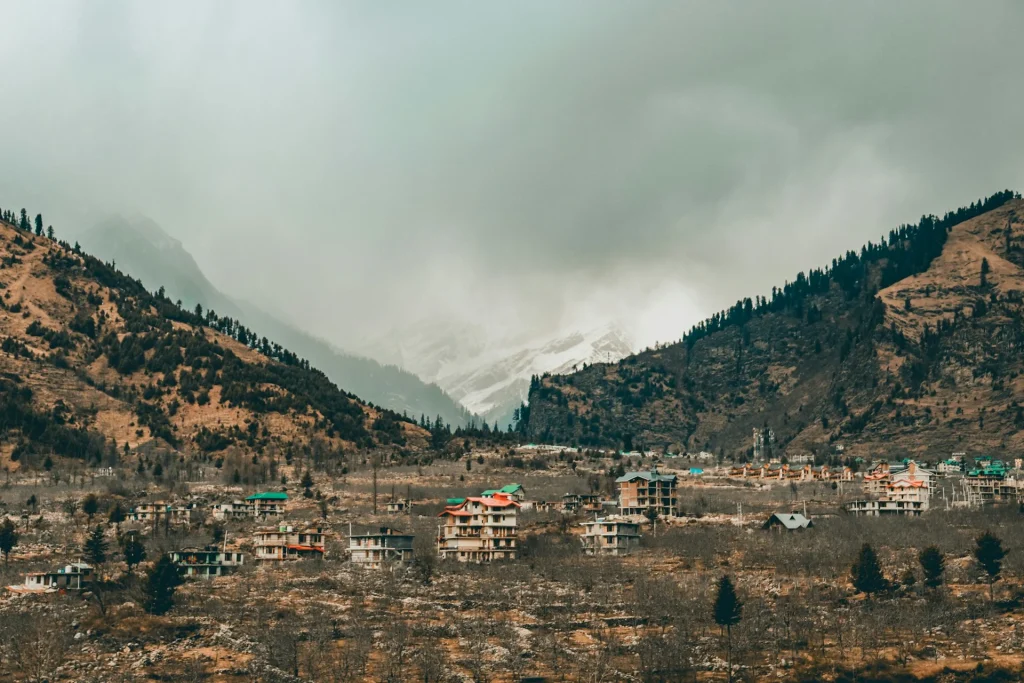
Beginning — The Call of the Himalayan Road The scenic highway from Shimla to Manali is a road tripper’s dream come true. It has winding paths framed by tall, snow-capped peaks, colorful villages, and charming roadside cafes serving hot momos. This famous road in northern India is more than just a way to get from one famous hill station to another; it’s an epic journey in its own right. It gives you nonstop beautiful views of the foothills of the Himalayas, with the turquoise Beas River always by your side, cutting through lush valleys. The 240-kilometer drive can be done in one long day, but it’s best to take your time and enjoy the culture, adventure, and food along the way over two, three, or even four days. This guide is the best thing you can bring with you on that trip. We will begin in the colonial charm of Shimla, then visit all the important stops along the way, from the quiet beauty of Naggar to the busy valley of Kullu. Finally, we will reach Manali, the adventure capital of the north. The Tarzan Way brings immersive storytelling journeys to life, turning this drive from a simple transfer into a rich cultural expedition, revealing hidden gems and local stories at every turn. Are you ready to pick up the phone? Let’s plan the best road trip through the Himalayas. Important Points The Route: A 240-kilometer drive (about 8 to 10 hours) that connects two of Himachal’s most well-known hill stations. Best to do over two or three days. Shimla is the starting point. You can learn about colonial history, visit The Ridge, Jakhoo Temple, and the UNESCO Kalka-Shimla Toy Train. The Journey: The drive itself is a draw, as it goes along the Beas River through towns like Kullu and Naggar. Key Stops: Kullu is great for river rafting, Naggar has a historic castle, and Manikaran has holy hot springs. Destination (Manali): a place for adventure and culture, with paragliding in Solang Valley, the Hadimba Temple, and Old Manali’s cafes. Important Planning: You need a Rohtang Pass Permit. Because of the risk of landslides, don’t take this route during the peak monsoon season (July to August). Be a responsible traveler: this ecosystem is very delicate. Working with guides like The Tarzan Way makes sure that your trip is safe and responsible. Shimla: The Beginning of the Colonies Credit: Unsplash Shimla, the “Queen of Hills” and the former summer capital of British India, is where your road trip starts. This city is the perfect first stop. It’s a great place to get used to the area and learn about its history before you go deeper into the mountains. Its neo-Gothic buildings and pedestrian-friendly streets give it an old-world charm that makes for a relaxing start to your trip. The Ridge and Mall Road This is the most important part of Shimla. The Ridge is a big, open-air platform that lets you see the Shivalik mountain ranges from all sides. On either side are Christ Church, the State Library, and a row of stores. Mall Road, a street without cars, is just below it and is full of life. It’s a great place to take a leisurely walk, buy souvenirs, and enjoy the lively atmosphere. Jakhoo Temple This old temple is on top of Jakhoo Hill, the highest peak in Shimla. It is dedicated to Lord Hanuman, the monkey god. There is a huge statue of the god that is 108 feet tall and can be seen from most of the city. There are two ways to get there: a beautiful hike or the “Jakhoo Gondola,” which is a cable car that gives you amazing views from above. Toy Train from Kalka to Shimla The trip to Shimla can be part of the fun. If you’re coming from Kalka (near Chandigarh), leave your car behind and take this train, which is a UNESCO World Heritage Site. This narrow-gauge railway, which was an engineering marvel at the time, goes through 103 tunnels, over 800 bridges, and offers stunning views of the forested hills. Tips for Travelers Jakhoo Monkeys: At Jakhoo Temple, be very careful with your things, like your phone, sunglasses, and food. Everyone knows that the monkeys that live there are very naughty. Booking a Toy Train: During peak season, tickets for the toy train sell out weeks or even months in advance. You can book online through the IRCTC website. Best Views: For the best pictures of the Himalayan skyline, go to The Ridge during the “golden hour,” which is either sunrise or sunset. Quick Facts The height of Shimla is 2,276 meters (7,467 feet). The Ridge, Kalka-Shimla Railway, and colonial architecture are some of the things that make it famous. Sita Ram & Sons for Chana Bhatura and Indian Coffee House for a nostalgic feel are two places you have to eat. The Journey: Driving on the Shimla-Manali Highway The trip from Shimla to Manali is a lot of fun. You will start by going down from Shimla’s heights and eventually meet the Beas River, which will guide you most of the way to Manali. The roads wind through tall pine forests, pass through small villages, and have many places where you can stop and take pictures of the beautiful scenery. Route and Conditions: NH 205 and NH 3 are the main roads that lead to it. The distance is only about 240 km, but it takes 8 to 10 hours to drive because the roads are winding and there may be traffic. That’s why it’s a good idea to stop along the way. What Makes It Popular with Travelers? The trip is the goal. The pine and deodar forests of the Shimla area give way to the more rugged, open, and beautiful valley of Kullu-Manali. Important Stops Along the Way: Kullu, Naggar, and More Credit: Unsplash Take your time on this drive. The towns and villages between Shimla and Manali are interesting in their own right, each
Ladakh Travel Guide: Explore the Land of High Passes
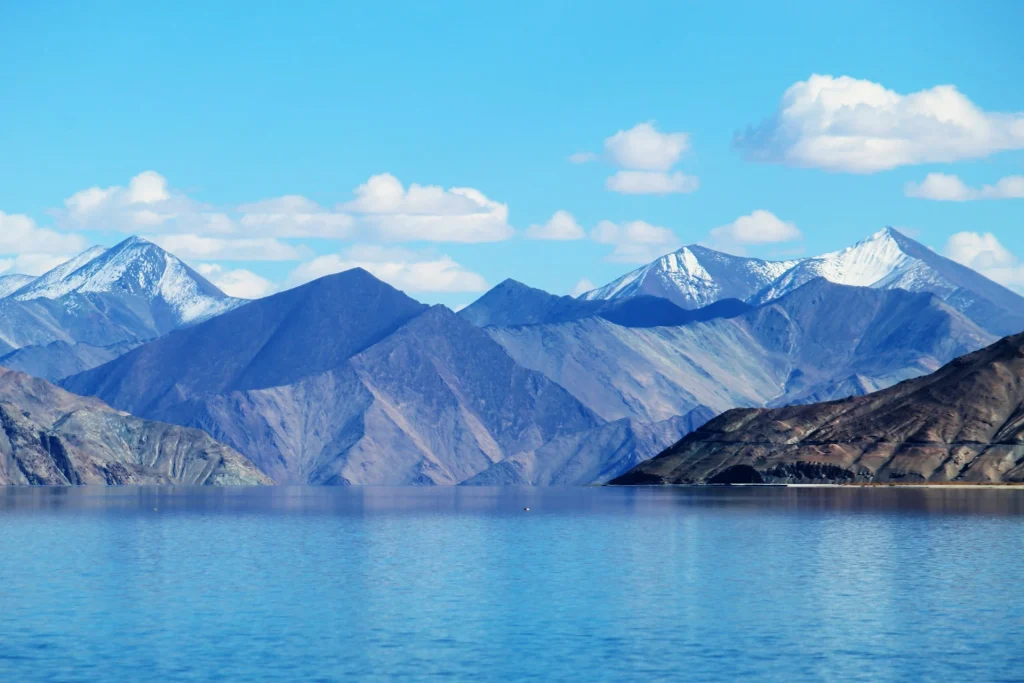
Beginning — Where Heaven and Earth Meet Imagine a desert at a high altitude that is painted in shades of ochre, brown, and deep purple. It is surrounded by the world’s most dangerous mountain ranges. Think of lakes that are the same color as the sky, old monasteries that cling to rocky cliffs, and colorful prayer flags that flutter in the cool, thin air, sending whispers of peace across quiet valleys. This is Ladakh, which means “Land of High Passes.” Ladakh is more than just a place to visit; it’s an adventure that tests the body, inspires the mind, and moves the soul. Ladakh is a one-of-a-kind place for adventurers, spiritual seekers, and nature lovers. This guide will help you find your way around this amazing part of the Himalayas. We will travel across the highest motorable passes in the world, stand in awe at lakes that change color, explore the peaceful world of Buddhist culture, and give you all the important tips you need to plan a safe and unforgettable trip. The Tarzan Way’s immersive storytelling journeys let you responsibly explore the raw, wild beauty of Ladakh while deeply connecting with its landscapes, culture, and people. Are you ready to answer the mountains’ call? Let’s go on a trip to the top of the world. Key Takeaways A Place of Greatness: Find out why Ladakh is known as the “Land of High Passes.” It has some of the highest motorable roads in the world, like Khardung La and Chang La. Iconic Landscapes: Find out about the natural wonders you have to see, like the otherworldly Pangong Tso Lake, the strange sand dunes of Nubra Valley, and the magnetic pull of Magnetic Hill. Spiritual Heartland: Visit the ancient and beautiful Tibetan Buddhist monasteries of Thiksey, Hemis, and Diskit to learn about the peaceful way of life there. Adventure Capital: Learn about exciting things to do, like the famous Chadar Trek, white-water rafting on the Zanskar River, and legendary motorbiking trips. Important Planning and Acclimatization: Learn how important it is to get used to Ladakh’s high altitude and get useful information on when to go, how to get there, and what permits you need. Exploration with care: With help from responsible travel partners like The Tarzan Way, you can learn how to travel mindfully in this delicate ecosystem. Pangong Tso: The Lake That Changes Color Credit: Unsplash The bright blue waters of Pangong Tso are the most famous picture of Ladakh. This saline lake is over 4,350 meters high and runs for an amazing 134 kilometers from India to Tibet. The most magical thing about it is that it changes colors throughout the day, going from blue to green to gray, depending on where the sun is. The Chang La Pass (5,360 m) is a tough part of the journey to the lake. The bare, stark mountains that surround the lake make the area feel very strange and peaceful. Advice for Travelers Plan to spend the night at a campsite near the lake’s shores (in villages like Spangmik or Man) to see the lake’s colors change. It takes about 5–6 hours to get from Leh to Pangong Tso, so leave early. Before going to Pangong, which is even higher, you should spend at least two days getting used to the altitude in Leh. Quick Facts 4,350 meters (14,270 feet) above sea level. Location: It runs along the border between India and China. Type: Endorheic (saline) lake that freezes over completely in the winter. Nubra Valley: The Sky Desert Credit: Unsplash You go down into a valley that feels like another world after crossing the famous Khardung La Pass, which was once thought to be the highest road in the world at 5,602 m. The Nubra Valley is a cold desert at a high altitude that is known for its stunning scenery, silver sand dunes near Hunder, and the one-of-a-kind double-humped Bactrian camels that live there. The Shyok and Nubra (or Siachan) rivers flow through the valley, making it surprisingly green and fertile in the middle of the dry mountains. Another place you have to see is the beautiful Diskit Monastery, which has a huge statue of the Maitreya Buddha looking down on the valley. Why People Want to Go There: It has a beautiful mix of landscapes that you can’t find anywhere else. It is truly unforgettable to ride a camel through sand dunes that are more than 10,000 feet high and see snow-capped peaks in the distance. Advice for Travelers To avoid getting sick from the high altitude, don’t stay at the top of Khardung La for more than 15 to 20 minutes. A camel safari on the Bactrian camels in Hunder is a must-do in Nubra. For a relaxing soak, go to the hot springs in Panamik. A spiritual trip to Ladakh’s old monasteries (Gompas) Credit: Unsplash Ladakh is a stronghold of Tibetan Buddhism. Its landscape is full of beautiful monasteries, or Gompas, that are places of art, spirituality, and learning. Thiksey Monastery: It has a multi-level structure that is often compared to the Potala Palace in Lhasa, Tibet, making it one of the most impressive monasteries. The Maitreya Buddha statue inside is an amazing 49 feet tall. Hemis Monastery: The richest and one of the most important monasteries in Ladakh, Hemis is known for its annual Hemis Festival, which features colorful cultural events and masked dances. Diskit Monastery is the oldest and biggest monastery in Nubra Valley. It has great views and is home to the famous 106-foot Maitreya Buddha statue. Alchi Monastery: Alchi is different because it is built on flat ground next to the Indus River. It is famous for its very old murals and paintings from the 11th century that are very detailed. Advice for Travelers Go to Thiksey Monastery early in the morning, around 6 AM, to see the monks’ deeply moving morning prayer ceremony. When you go to a monastery, wear clothes that cover your shoulders and knees. As a sign of
AI-Powered Travel Guide: Delhi to Leh Ladakh Adventure
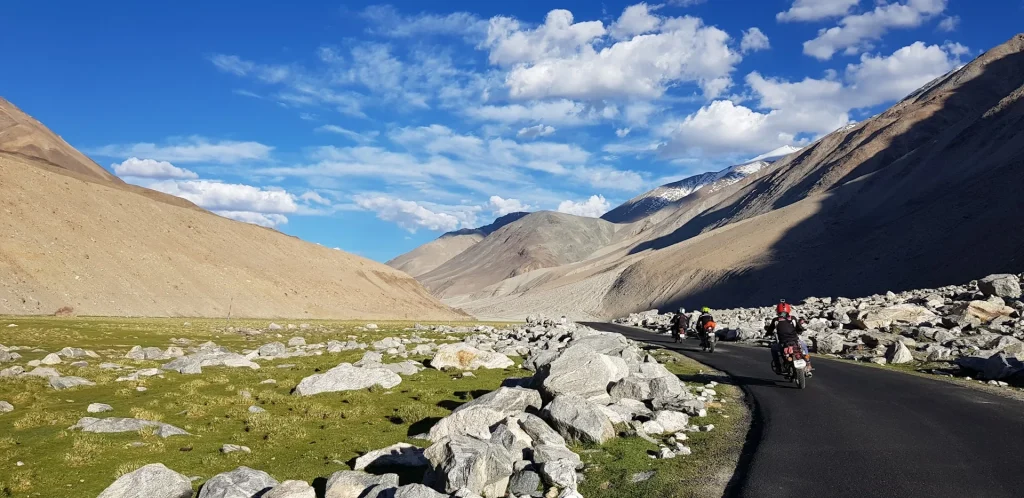
There is a place in the middle of the beautiful Himalayas that has stark beauty, old monasteries, and landscapes that touch the heart. Leh Ladakh, which means “Land of High Passes,” is more than just a place to visit; it’s a fun pilgrimage for people. People who want to push their limits and get back in touch with nature in its most basic form are drawn to its rough terrain, rich culture, and beautiful views. The best adventure is to leave the busy plains of Delhi and head to this desert in the mountains. But getting ready for a trip like that can be just as hard as the trip itself. Because the area is so far away, has such high altitudes, and has so few roads, it needs careful and effective planning. This is where old landscapes and new technology meet. Consider getting a digital co-pilot who is smart for your trip. This co-pilot would know how you like to travel, how much money you have, and how much adventure you want. It would then plan the best trip for you. Welcome to the next level of travel. This is your AI-powered travel guide to a great trip from Delhi to Leh Ladakh. We’ll take you on a virtual trip and give you important advice, the best itineraries, and insider tips to help you plan your action-packed trip to this beautiful Himalayan wonderland. Leh Ladakh: The Crown Jewel of the Himalayas Credit: Unsplash Leh Ladakh is a very high desert area in the northernmost part of India. The Karakoram and Himalayan mountain ranges are very big, and it is between them. The winters are very cold, but the summers are surprisingly warm. The mountains and lakes are dry and brown, and the lakes are so blue that they look impossible. This is the best playground for people who like to have fun. There are a lot of fun things to do in Ladakh that will get your heart racing. You can hike through beautiful places like the Markha Valley, cross the frozen Zanskar River on the famous Chadar Trek in the winter, feel the rush of adrenaline while white-water rafting on the Indus River, or ride your motorcycle over the highest mountain passes in the world. Rich Culture: Tibetan Buddhist culture has been around in the area for a long time. You’ll see old, peaceful monasteries on cliffs, colourful prayer flags waving in the wind, and people who are nice to you living there. Going to a monastery festival or staying in a traditional homestay is a big part of the experience because you get to learn about the local culture. Part 1: The Blueprint: How to Use AI to Plan Your Trip Credit: Unsplash Planning a trip to Leh Ladakh can be hard. How do you pick the best route? What time is best to go? How do you find time to visit all the important places? This is when an AI-powered travel guide comes in handy. AI travel planners are more than just search engines. They use smart algorithms to create personalised travel plans that are perfect for you. It’s like having your own travel guide. Hyper-Personalized Itineraries: You can tell your AI planner, “I have 10 days, a mid-range budget, and I’m an adventure lover who wants to do a short trek and see Pangong Lake.” The AI will instantly generate a day-by-day plan that maximises your time and matches your interests. Smart Assistant in Real Time: While you’re on your trip, AI-powered apps can give you real-time updates on the weather, road closures (which happen a lot in Ladakh), and safety alerts. They can even come up with new routes or things to do right away if your original plan doesn’t work out. Budget Optimisation: AI tools can help you stick to your budget by finding the best deals on flights, hotels, and even rental bikes. You won’t have to miss out on fun things to do. Finding Hidden Gems: AI can look at travel blogs, reviews, and geo-tagged photos to suggest places that aren’t as well-known as the big ones but still fit your interests. For instance, it might recommend a less well-known monastery or a beautiful view that other tourists might not see. Two Ways to Travel from Delhi to Leh Ladakh Credit: Unsplash The first part of your adventure is the trip itself. There are two main ways to travel from Delhi to Leh: Option 1: The Fast and Easy Way Is to Fly Flying straight from Delhi to Kushok Bakula Rimpochee Airport (IXL) in Leh is the quickest way to get there. Pros: It’s quick (about 90 minutes), easy to get to, and the views of the snow-capped Himalayan peaks from the air are amazing. Cons: The biggest problem is that you might get Acute Mountain Sickness (AMS). It’s hard on the body to fly straight from Delhi, which is at sea level, to Leh, which is at 11,500 feet. You should spend at least 48 hours in Leh to fully rest and get used to the high altitude. Pro Tip: Use an AI-powered flight aggregator that uses predictive analytics to help you find the best time to buy your ticket at the lowest price. Option 2: By Road (The Most Fun Way) This is the classic thing that everyone wants to do. A road trip lets your body slowly get used to the changes in the landscape and lets you see them happen. The trip is about 1,000 kilometers long and can be done by bike, car, or bus. Pros: The views are amazing, and it’s a great trip. It is much easier to get used to the height because the climb is so slow. Cons: It takes a long time, at least two full days of driving. Driving on the roads can be hard, and they are only open for a few months each year. Pro-Tip: Use an AI-powered route planner to find the best places to stop
Shimla Guide: Discover the Charm of the Hills
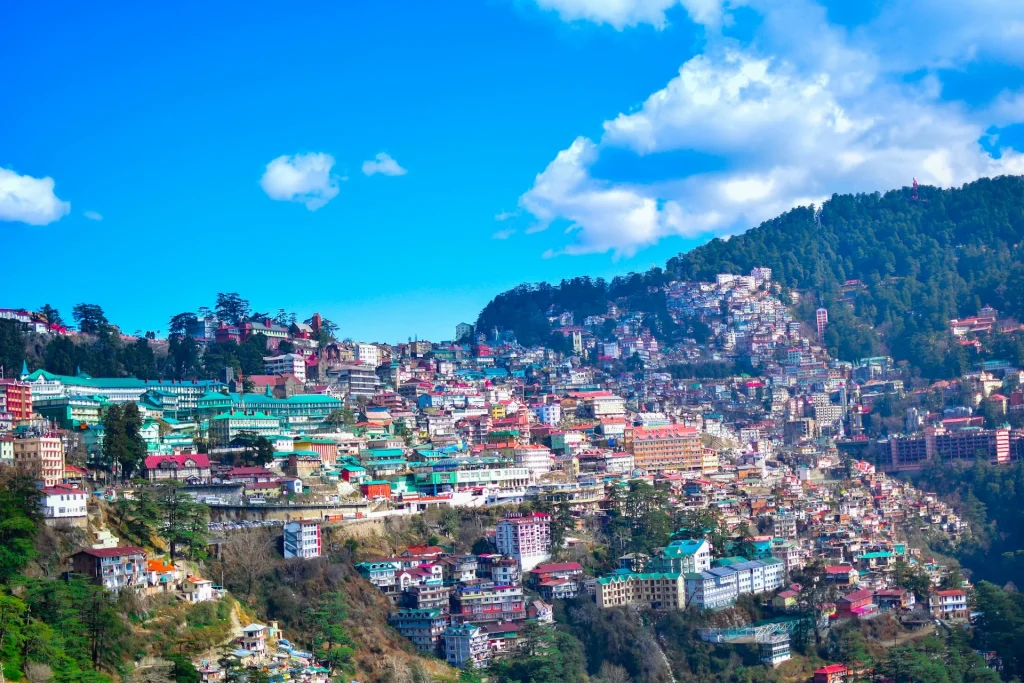
Where the Hills Echo: An Introduction, The Past Picture a place where the air smells like pine trees covered in mist, colonial-era buildings stand as proud reminders of a time long gone, and the majestic Himalayas rise up behind it all. This is Shimla, not a dream. This beautiful hill station was once the summer capital of British India. It still draws travellers in with its unique mix of natural beauty and architectural elegance. This place is more than just a vacation spot; it’s a trip back in time. Shimla is the answer for people who want to get away from the noise of the city and into a world of peaceful scenery and interesting history. This guide is meant to be your best friend as you explore every part of the “Queen of Hills.” We’ll show you around its famous sights, take you on secret trails, let you taste its local foods, and give you all the useful advice you need to plan an amazing trip. The Tarzan Way brings immersive storytelling journeys to life, allowing travellers to safely explore Shimla’s historic lanes and beautiful viewpoints, where every corner has a story and every view is a work of art. Are you ready to be charmed? Let’s go to the heart of Shimla and find out why it has always been so appealing. Key Takeaways: A Historic Getaway: Find out why Shimla was the summer capital of British India and see its beautiful colonial buildings, such as the Viceregal Lodge and Christ Church. Famous Places: Find out about the must-see places, such as The Ridge, Mall Road, and the Jakhoo Temple, which has a huge statue of Lord Hanuman. UNESCO World Heritage: Take a ride on the Kalka-Shimla Toy Train, a historic train ride that gives you stunning views of the Himalayas. Beyond the Town: Kufri is great for adventure sports, Chail is great for its peaceful palace, and Mashobra is great for its peaceful nature trails. Practical Planning: Find out when the best time to go is, how to get to Shimla, where to stay, what to eat, and other important travel tips. Be a responsible traveller: Learn how to travel mindfully in the Himalayas so you can protect its beauty and culture with help from groups like The Tarzan Way. 1. A Look into Shimla’s Royal Past Credit: Unsplash Shimla was once a quiet group of villages before it became a busy tourist spot. In the 1820s, British officers looking for a break from the hot Indian summers found its nice weather and changed their fate. In 1864, it was officially named the British Raj’s summer capital. For the next few decades, the whole government would move here from Calcutta (and later Delhi) for six months each year. Because of this yearly migration, Shimla became a centre of power, glamour, and political intrigue. It was given the nickname “Queen of the Hills.” The beautiful buildings, the carefully planned Mall Road, and the overall layout of the town are all lasting gifts from this time period. Advice for Travellers You can see rare photos and objects from the British Raj at the Shimla Heritage Museum. Hire a local guide to take you on a heritage walk so you can hear interesting stories and anecdotes that aren’t in guidebooks. Read Rudyard Kipling’s “Kim,” which has Shimla in it a lot, to get a sense of what the town was like at that time. Quick Facts Shyamala Devi, the goddess Shyamala, was the name before. Height: About 2,276 metres (7,467 feet). Importance in history: From 1864 to 1947, it was the summer capital of British India. 2. The Ridge and Mall Road are the heart of Shimla Credit: Unsplash A leisurely walk along The Ridge and Mall Road, Shimla’s two most famous streets, is a must for anyone who goes there. In the middle of town, The Ridge is a big open area with amazing, unobstructed views of the snow-capped Himalayan ranges. It is the centre of all cultural activities and is surrounded by important landmarks. Mall Road, a street without cars, is just below The Ridge. It is lined with colonial-style buildings, busy shops, cute cafes, and restaurants. It’s the main shopping street and social centre of Shimla. It’s a great place to go for a walk, look for souvenirs, or just enjoy the lively atmosphere. Tips for Travellers The Ridge has the best views and photo opportunities at sunrise and sunset. It’s a classic Shimla experience to get soft ice cream from the vendors on Mall Road. Wear shoes that are easy to walk in because the road is only for pedestrians. Why It Draws Tourists: Because it’s the best way to experience a hill station. The mix of beautiful mountain views, old buildings, and lively local life makes for a relaxing and energising atmosphere. 3. Amazing buildings from the British period Credit: Unsplash Shimla is a museum of colonial architecture that is still in use. The neo-Gothic, Tudor, and Victorian styles of the buildings here tell stories of a grand past. Christ Church is the second-oldest church in North India and is on The Ridge. You have to see it because of its beautiful stained-glass windows, tall spire, and peaceful atmosphere. At night, when the church is lit up, it looks especially nice. Viceregal Lodge and Botanical Gardens: This used to be the home of the British Viceroy of India. Now it is home to the Indian Institute of Advanced Study. Scottish Baronial architecture is amazing. Take a guided tour of the inside to see the teak-panelled walls and learn about the important decisions that were made there, like the ones that led to the partition of India. Gaiety Theatre: A Victorian theatre on Mall Road that has been beautifully restored. It used to host famous people like Rudyard Kipling. It still hosts a variety of cultural events and plays. Advice for Travellers Because the times for the Viceregal Lodge tour are set, you should check
Spiti Valley: The Best Travel Guide to Finding the Right Time to Go
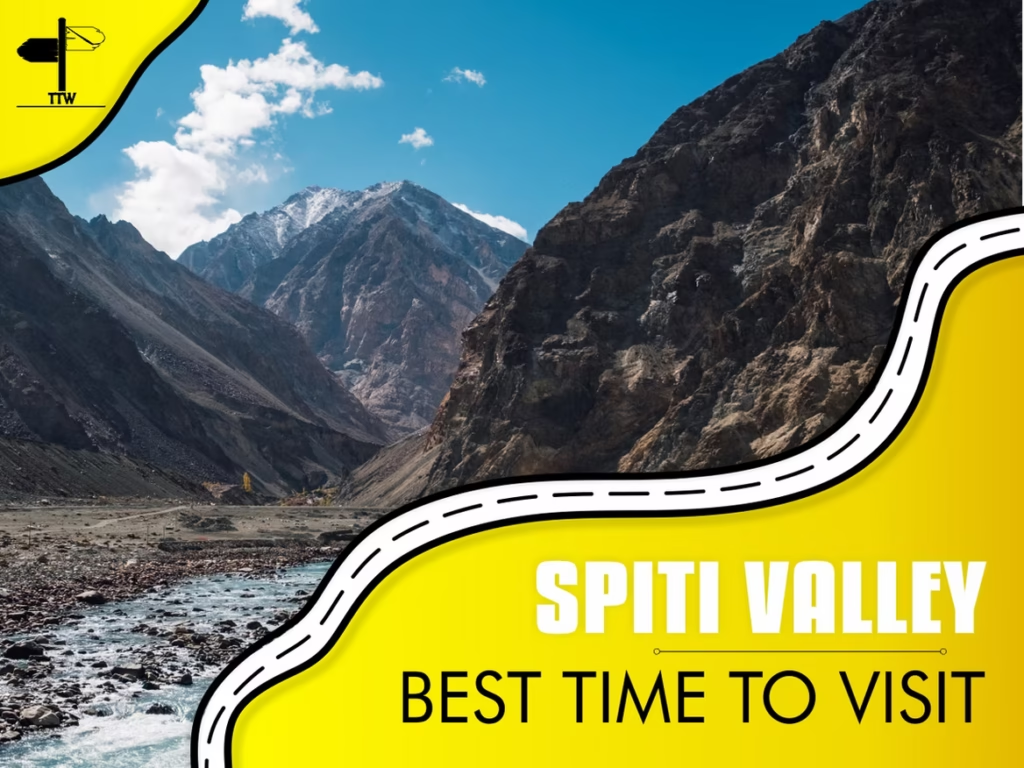
Some places on Earth are more than just places to go; they are trips to another world. One of these places is the Spiti Valley. This cold desert mountain valley is a piece of Tibet that has been cut off from the rest of India. It is in the far north-east of Himachal Pradesh. It’s a place of stark, breathtaking beauty, with ancient monasteries clinging to bare cliffs, clear blue rivers cutting through huge canyons, and a billion stars lighting up the night sky. If you’re not brave, you shouldn’t go to Spiti. The roads are hard to drive on, the altitude is hard to deal with, and the weather is bad. But for those who answer its call, the rewards are beyond measure. It’s an adventure that pushes you to your limits, a spiritual journey that calms your soul, and a cultural experience that opens your heart. The friendly people who live here, who have simple lives and warm smiles, are what make this valley special. Timing is the most important thing for a successful trip to the Spiti Valley. Picking the best time to visit Spiti Valley can make the difference between a great trip and a logistical nightmare. The weather here is very bad, and the high mountain passes that connect the two areas are only open for a few months each year. This is the most complete guide to planning the best trip to Spiti Valley. We’ll talk about everything, from the best time of year for your travel style to detailed itineraries, what to pack, how to budget, and all the things you need to do (and not do!). We have something for everyone, whether you’re looking for adventure, spirituality, or photography. A World Within a World: About Spiti Valley Credit: unsplash The name “Spiti” means “The Middle Land,” which is a perfect way to describe where it is between India and Tibet. It’s a cold desert at a high altitude, which means it doesn’t get much rain because the Himalayas block the monsoon clouds. This makes the area’s famous landscape: rocky, barren mountains in shades of brown, purple, and grey, with patches of green barley fields and the Spiti River’s shimmering turquoise. Tibetan Buddhism is the main religion in this area. There are some of the oldest and most important monasteries in the world in the valley. For more than a thousand years, there have been places where people can learn and grow spiritually. Life here is simple, hard, and very connected to nature and faith. A full breakdown of the best times to visit Spiti Valley by season Credit: freepik.com There isn’t one “best” time to visit Spiti; it all depends on what you want to do. The valley has a very different personality in each season. The best time to go is in the summer, from June to September This is the best time to visit Spiti Valley because it is the most popular and easiest to get to. The weather is perfect, and the whole Spiti circuit, even the high passes, is open. Weather: The temperature during the day is nice and warm, between 15°C and 25°C. A t-shirt and a light jacket are often enough to keep you warm. But the nights are still cold, with temperatures dropping to between 3°C and 7°C. Road Conditions: The highways from Manali to Kaza and from Shimla to Kaza are both open. There may be some water crossings from melting snow and occasional landslides caused by the monsoon on the roads leading up to the area (especially near Manali), but this is usually the safest time to go on a road trip. What to Look Forward To: Bright Landscapes: The valley is at its greenest right now, with lush barley fields making beautiful patches of colour against the dry mountains. Access: It’s easy to get to all of the monasteries, villages, and tourist spots, like the famous Chandratal Lake. Peak Crowds: This is the most crowded time of year, especially in June and July when Indian schools are out for summer break. There will be more tourists, and rooms can fill up quickly. Who Should Go in the Summer? This time of year is great for first-time visitors, families, and people who like the weather to be more pleasant. This is the best time to see and do everything the valley has to offer. Fall (from mid-September to October) is the best time for photographers Credit: freepik.com A lot of people who have been to Spiti Valley before say that this is the best time to go. The summer crowds are gone, the monsoon has passed, and the valley is now bathed in a magical golden light. The weather is nice and clear, with temperatures between 10°C and 20°C. But the nights get a lot colder, and they often go below freezing (0°C to -5°C). Road Conditions: The roads are mostly in great shape now that the monsoon rains have stopped. But there is a small but real chance that the Kunzum Pass (on the Manali route) will close after the first week of October due to an early snowfall. What You Should Expect: The valley turns into a canvas of fall colours that are stunning. After the harvest, the poplar and willow trees turn a bright yellow, and the fields turn a golden brown. Fewer Tourists: You’ll have the beautiful scenery and old monasteries all to yourself. Clear Skies: The air after the monsoon is very clear, giving you the best views of the snow-covered peaks and the stars at night. Who Should Come in the Fall? This time of year is great for photographers, people looking for peace, and experienced travellers who don’t mind the cold and want to see the valley at its most beautiful and peaceful. Winter (November to April) is the best time for an adventure Credit: pexels.com Not everyone can go to Spiti in the winter. It is a very extreme adventure that needs a lot
Vaishno Devi Travel Guide 2025: Cost, Itinerary, Tips & How to Plan Your Yatra
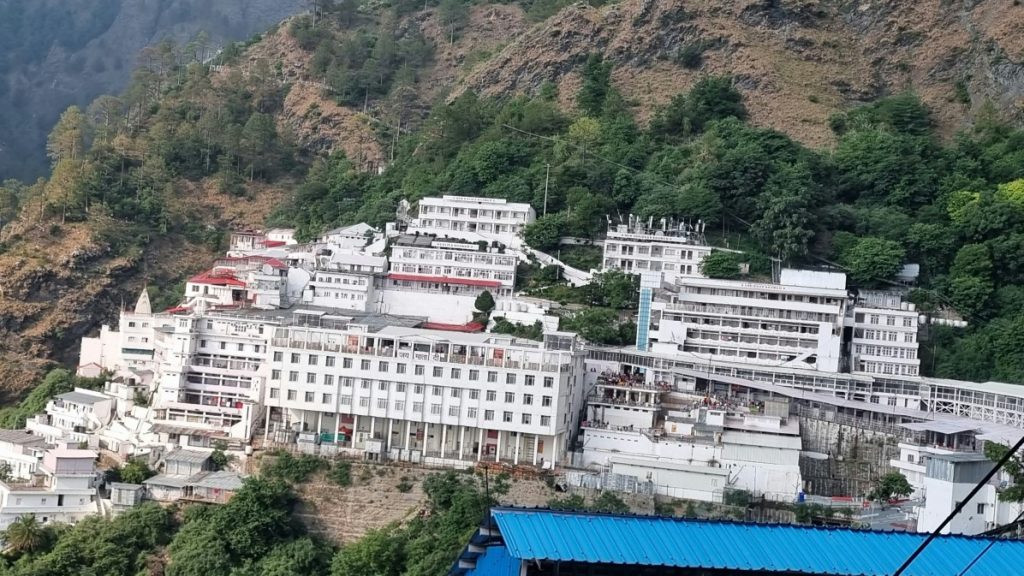
What’s in this Blog Why Vaishno Devi is a Must-Visit Pilgrimage How to Reach Vaishno Devi Best Time to Visit Vaishno Devi Yatra Registration & Permits Trip Cost & Budgeting Where to Stay (Katra & Nearby) Itinerary Suggestions – 2-Day and 3-Day Trip Plans Helicopter, Pony & Porter Services Things to Carry & Travel Tips Nearby Places to Visit FAQs Final Thoughts Why Vaishno Devi is a Must-Visit Pilgrimage Going to Vaishno Devi in 2025 is more than just a religious pilgrimage. It’s an experience rich in Himalayan beauty, culture, and faith. Vaishno Devi, one of India’s holiest shrines, is tucked away in Jammu’s Trikuta Hills. In the eyes of pilgrims, Mata Vaishno Devi grants the desires of those who come with pure devotion. In addition to the spiritual aspect, the trip offers beautiful trekking routes, friendly locals, and the opportunity to discover hidden treasures. This vaishno devi travel guide includes all the necessary information for anyone planning a vaishno devi trip 2 days itinerary or vaishno devi trip 3 days itinerary. Pro Tip: For smoother planning, reserve your lodging and yatra registration at least two months in advance. How to Reach Vaishno Devi There are multiple transport options to reach Vaishno Devi : By Train: The closest significant train station is Jammu Tawi, which is 48 kilometers from Katra. It is connected to Delhi, Mumbai, and Kolkata by regular trains. By Flight: The closest significant airport is Jammu Airport, which is 50 km away. From there,buses and taxis are too frequently available to travel to Katra . By Road: As Katra has brilliant road connections to Srinagar, Udhampur, and Jammu to travel by road. There are plenty of deluxe buses and taxis too. The actual yatra starts with a 13-kilometer trek to the Bhawan (shrine) from Katra. Pilgrims have three options: walk, rent ponies, or take a helicopter. Pro Tip: To prevent travel fatigue before beginning the trek, get to Katra one day early. Best Time to Visit Vaishno Devi Although the shrine is open all year, there are special experiences to be had in different seasons: Spring (March–May): Beautiful scenery and pleasant weather. Monsoon (July–September):Fewer tourists, but be cautious of landslides. Autumn (October–November):Clear skies and joyous occasions like Navratri. Winter (December–February):snow-covered pathways, fewer tourists, and serene darshan. Pro Tip: Plan during Navratri, but make reservations well in advance, if you want a festive atmosphere. Yatra Registration & Permits Before beginning the yatra, each pilgrim is required to complete the Vaishno Devi online registration. Registering is free and can be done at Katra counters or on the official Shrine Board website. A yatra slip is mandatory at checkpoints. Rules to follow: Carry a valid ID proof. Children under the age of five are not required to register. Refrain from bringing big bags or prohibited items. Pro Tip: For easy passes and updates, download the “Mata Vaishno Devi Yatra Registration” mobile app. Trip Cost & Budgeting The Vaishno Devi trip cost is determined by the services, travel, and lodging selected: Transport (Delhi to Katra): ₹1,500–₹3,000 by train, ₹3,500–₹6,000 by flight. Stay in Katra: The cost of under-budget dharamshalas will be in the range of ₹500–₹1,000 and mid-range hotels is of ₹1,500–₹3,000. Food: The per day price of simple vegetarian meals is of around ₹300–₹600. Helicopter Ride: The estimated cost of helicopter’s one way ride is ₹1,840 per person. Other Expenses: Ponies, palanquins, or porters cost extra. While a comfortable trip may cost ₹12,000 to ₹15,000, a more affordable trip can be planned for ₹6,000 to ₹8,000 per person. Pro Tip: To reduce the cost of food while trekking, bring snacks and reusable water bottles. Where to Stay (Katra & Nearby) There are many different lodging options in Katra: For Pilgrims: Dharamshalas run by trusts and guesthouses near the shrine. For Families: There are under budget accommodations with shuttle services. Vegetarian dining options are too available. For Comfort Seekers: Premium hotels offering mountain views and spa treatments. Pro Tip: To save time ,its better to choose a hotel near the yatra registration counter. Itinerary Suggestions – 2-Day and 3-Day Trip Plans 2-Day Vaishno Devi Itinerary Day 1: Get to Katra, register, and begin the hike that evening. Arrive at Bhawan Darshan at night. Day 2: Go back to Katra in the morning, check out the local marketplace, and then leave for Jammu. 3-Day Vaishno Devi Travel Planner Day 1: Arrive in Katra, relax, and visit neighboring temples. Day 2: Trekking begins early in the morning, with a visit to Bhairon Temple and darshan at Bhawan. Day 3: Before departing, return to Katra and explore Patnitop or Shiv Khori. Pro Tip: Add an extra day if you want to comfortably visit neighboring attractions. Helicopter, Pony & Porter Services Helicopter: For the vaishno devi helicopter booking, use the Shrine Board website to make an online reservation. It takes eight minutes to travel from Katra to Sanjichhat. Ponies & Palanquins: For those who are unable to trek, it is available from Katra. Porters: During the yatra, assist with carrying children or luggage. Although prices vary, in order to prevent overcharging, payments must be made at authorized counters. Pro Tip: Because spots fill up quickly, reserve helicopter rides 60 days in advance. Things to Carry & Travel Tips Light woolens or jackets depending on the season. Comfortable walking shoes. Painkillers, prescription medications, and a first aid kit. For night trekking,Torchlight or headlamp is must to carry. Energy bars and dry fruits for endurance. Pro Tip: Since plastic bags are prohibited near Katra and the shrine, don’t bring them. Nearby Places to Visit After your darshan, if you have time, then check out these attractive places to visit near vaishno devi: Patnitop: A hill station featuring adventure sports and meadows. Shiv Khori: A cave shrine dedicated to Lord Shiva. Jhajjar Kotli: It has a beautiful picturesque riverside picnic area. Bahu Fort, Jammu: It’s a historic fort featuring a Kali temple. Pro Tip: Add an extra day to your itinerary so that you can visit Shiv
Jibhi Offbeat Travel Guide: 3–5 Days of Nature, Culture & Adventure
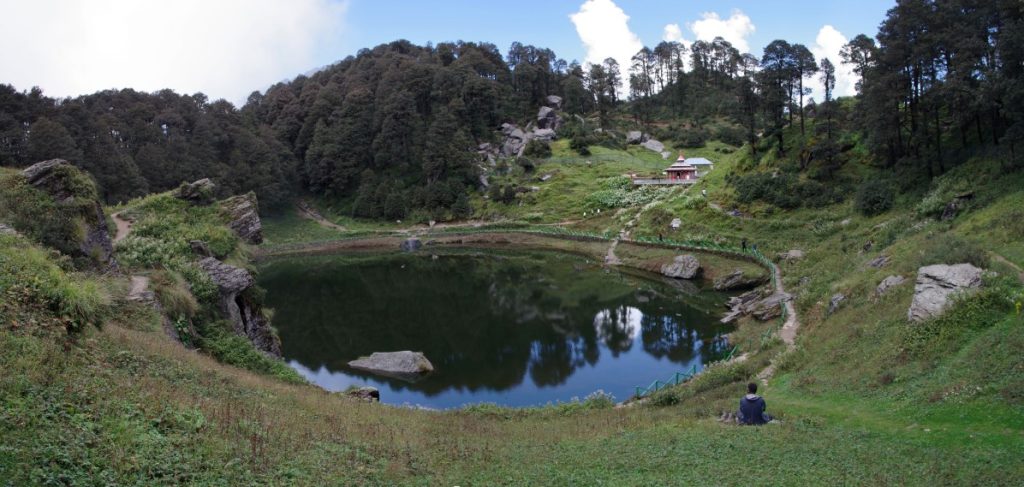
Why Jibhi Is a Hidden Gem Jibhi is a peaceful, worth-visiting village ideal for leisurely travel. It is nestled in the Tirthan Valley of Himachal. Jibhi provides immense peace, unexplored paths, and genuine mountain life in contrast to Manali or Shimla. A well-planned Jibhi itinerary aids in striking a balance between leisure, adventure, and sightseeing. Whether you are looking for a 3-day short escape, 4-day balanced holiday, or 5-day immersive trip, Jibhi has something to offer to everyone be it families, couples or backpackers. Unique Highlight: Because of Jibhi’s verdant meadows and wooden homes, it is referred to as the “mini New Zealand of India.” Pro Tip: To avoid high tourist rush and to take advantage of stunning homestay options, schedule your trip to Jibhi advance especially during the week. What’s in this Blog? Why Jibhi Is a Hidden Gem How to Reach Jibhi Best Time to Visit Jibhi Jibhi Itinerary – 3 Days Jibhi Itinerary – 4 Days Jibhi Itinerary – 5 Days Where to Stay in Jibhi Things to Do in Jibhi & Nearby Local Festivals and Food Pro Travel Tips for Jibhi FAQs Final Thoughts How to Reach Jibhi By Road: It takes 12 to 14 hours to drive 500 km via the Aut tunnel from Delhi to Jibhi. By Train: Chandigarh is the closest station; from there, take a bus or taxi. By Bus: Direct overnight Volvo buses run till Aut, followed by a 1.5-hour local cab. By Air: Take a plane to 60-kilometer-distance Kullu-Manali Airport (Bhuntar). Pro Tip: Motion Sickness is common as mountain curves can be quite steep. So, always carry motion sickness medication when driving. Best Time to Visit Jibhi Spring (March–May): If you love nature & greenery, it’s the perfect time, as there are blossoms and greenery all around. Perfect for trekking too. Summer (June–August): In the month of June to August, there’s the essence of cool climate, refreshing waterfalls to relax, and offbeat escapes. Autumn (September–November): Great time to experience the beauty of golden landscapes, clear skies, and festivals. Winter (December–February): In this snowy paradise, cozy getaways and romantic getaways are ideal for exploring. Pro Tip: Avoid the time of July–August especially if you’re traveling with kids or elderly. Because there’s a high chance of monsoon landslides. Jibhi Itinerary – 3 Days (Short Getaway Plan) Day 1: Stay at riverside homestay for experiencing real sight-seeing beauty and unwind with a bonfire in the evening. Day 2: Explore Chehni Kothi and visit the beautiful Jibhi Waterfall, and have a local Himachali lunch. Day 3: Before departing, don’t forget to visit serene Serolsar Lake and Jalori Pass. For Couples: Arrange a stargazing stroll. Spend your evenings at the riverbank cafés. For Families: Stay away from rough & lengthy hikes especially if you’ve come with children or elders. Better to opt for shorter treks like Jibhi Waterfall. For Backpackers: Stay in hostels to network with other fellow tourists. It’s a better opportunity to exchange trekking advice. Pro Tip: In Jibhi, get up early as days are shorter. Because the sun sets quickly in the valley, so plan your itinerary accordingly. Jibhi Itinerary – 4 Days (Balanced Trip Plan) Day 1: Arrival, riverside walk, and local café visit. Day 2: Day trip to Tirthan Valley, trout fishing, and village exploration. Day 3: Serolsar Lake picnic and hike up Jalori Pass. Day 4: Explore the temples and Banjar village while shopping for handicrafts. For Couples: Go to Shoja for a day trip to take pictures of the sunset. For Families: Incorporate Banjar village to experience local cuisine and culture. For Backpackers: Extend to Tirthan Valley. A must try meal is trout fishing. Pro Tip: Better to rent a comfortable scooter locally for the mobility between villages. Jibhi Itinerary – 5 Days (In-Depth Experience) Day 1: Check-in to your home-stay. Have a delicious & authentic local Himachali thali dinner to start with a local vibe. Day 2: Trek to a waterfall and explore towards the Tirthan Valley. Day 3: A full-day hike up Jalori Pass and lakeside relaxation. Day 4: Must visit Shoja, take walks for photography, and discover hidden meadows. Day 5: For Cultural immersion better to have cooking sessions with locals. For Couples: For better privacy and bonfires experience, it is ideal to go for wooden cottages. For Families: Dedicate a day for Himachali meals and local cooking classes. For Backpackers: Add the Great Himalayan National Park on your list of places to visit. Pro Tip: To visit Great Himalayan National Park, you need to add an extra night in your trip. Where to Stay in Jibhi Homestays: Suitable for genuine Himachali hospitality. Cottages: Comfortable wooden accommodations with views of pine forests. Budget Hostels: Excellent for lone travelers and backpackers. Luxury Resorts: Perfect for couples looking for comfort and privacy. Pro Tip: Make your reservations for homestays in advance. Especially during summer and New year, it’s a smart move to book in prior. Jibhi has a lot of different lodging choices, from riverside hostels to comfortable wooden cottages. Your choice must be based on what traveller you are, whether you are backpacker, traveling with family, or traveling as a couple. For Couples : Romantic Cottages: There is the availability of private wooden cottages with fireplaces and mountain-view cottages for couples. Boutique Stays: Riverside cabins provide seclusion and candlelight dinners. Luxury Resorts: Luxury resorts are ideal for a couple’s honeymoon or anniversary trips. Pro Tip: Ask for cottages with valley-viewing balconies for an unforgettable sunrise experience. For Families : Family-Friendly Homestays: Homestays having big spacious rooms with home-cooked meals and warm hospitality. Cottages with Kitchenettes: It is perfect if you extended your stays with children; Local Villager Homes: Excellent for cross-cultural interactions. It provides a safer environment to families. Pro Tip: For the availability of nearby markets and medical facilities, it is better to choose stays near Banjar or Shoja. For Backpackers: Budget Hostels: You can meet fellow travelers in the common areas and dorms. Eco-Stays: Reasonably priced mud homes or wooden huts close to
Customized Bali Travel Packages: Tailored Itineraries for Your Dream Trip
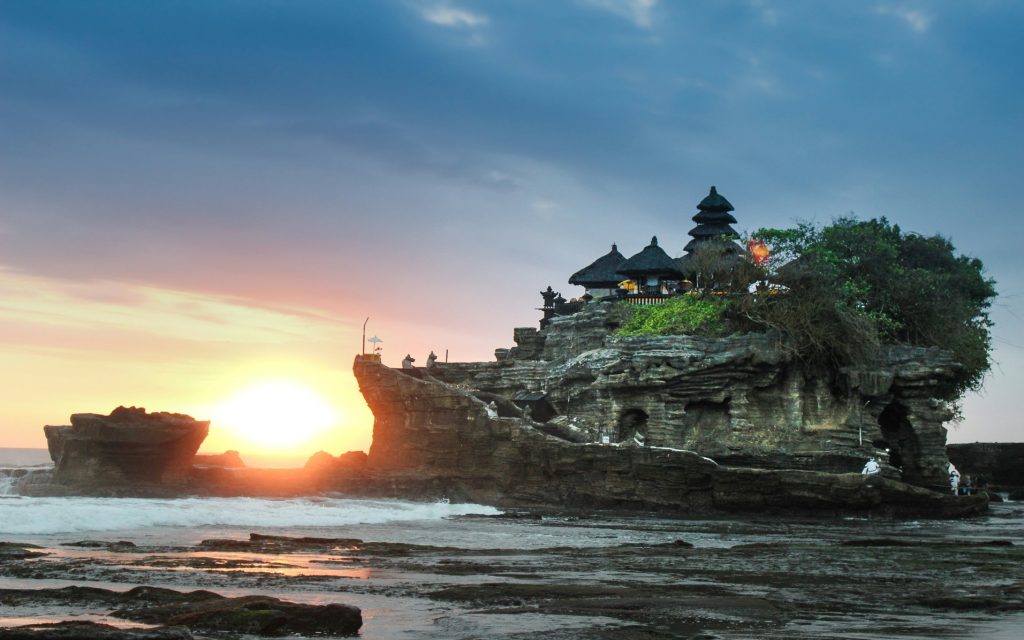
Bali is not only a place, it is a tropical heaven with terraces of rice, ancient temples, perfect beaches, and colorful culture. You want adventure, romance, fun, or you want to relax on the beach; Bali has it all. So pack your bag & plan your Bali trip. Whether it is taking a bite of coffee as one gazes at Mount Batur or walking on the white sands of Nusa Dua, this island is appealing to all kinds of travelers. There is no better way to enjoy Bali than to book personalized Bali tour packages, which are customized according to your interests, budget, and the dates of your travels. This Bali travel guide will guide you in planning the ideal escape, be it a Bali honeymoon of dreams, an adventure tour with friends and family, or a family-friendly vacation. Why Choose Customized Bali Trip Packages Tour packages are usually used as an ordinary routine, where the tours will rush to different tourism sites, leaving you with no time to experience the beauty of Bali. You are given total freedom to create your own trip to Bali with a custom Bali trip planner. And it’s the combination of AI planning and local knowledge that you get with options such as The Tarzan Way. The reason why a tailored solution is the best is as follows: Unique itineraries that are made to your wavelength- you can be a couple, a family, or a traveler on your own. The Bali trip packages are constructed according to your budget and travel preferences. Access to uncommon gems in locations not frequented by the general tourists. None of no stress when it comes to bookings or last-minute changes. Your vacation is more than a traveling experience; it is highly personal. Bali Travel Guide: Pre-visit Guide: Things You Should Know. Some of the basic travel tips before planning your Bali vacation are: Best Time to Visit Bali: Dry Season (April to October): Best to go to beaches, hiking, and outdoor activities. Wet Season (November to March): Fewer people and prices come down, but it will probably rain. Language: Language is widely spoken in tourist areas and is spoken by most people, although the official language is Bahasa Indonesia. Visa Requirements: Most countries have visa-free access of up to 30 days. Transportation: Private drivers are best when it comes to day tours; scooters are good when it is short. A Bali holiday planner can be used to plan your trip to avoid last last-minute rush. The Ultimate Guide to the Bali Travel Itinerary. Bali travel itinerary is well organized and does not lean on a single aspect of relaxation, adventure, or cultural exploration. Here’s a sample 7-day plan: Day 1-2: Ubud -The Cultural Heart of Bali. See the Tegalalang Rice Terrace to have spectacular views. See Ubud Monkey Forest and Goa Gajah Temple. Take a cooking lesson in Bali to immerse yourself in the culture. Be at Jungle Villa or the boutique resort. Day 3-4: Seminyak and Canggu Beach Vibe and Nightlife. Spend time on the fine beaches of Seminyak in the luxurious beach clubs. Surf lesson in Canggu at the most popular beaches. Take a spa and a Balinese massage. Shop in trendy coffee and local shops. On Day 5: Adventure Day Energetic mountain Batur hiking at sunrise. White-water rafting on the Ayung River. Snorkel or dive in Amed or Menjangan Island. And On Day 6-7: Nusa Dua and Uluwatu- Romance and Relaxation. Rest on the gorgeous beaches of Nusa Dua. Uluwatu Temple has the best cliff views and a performance of the Kecak dance in the evening. Finish your visit with a romantic seafood dinner at Jimbaran Bay- ideal when you are on a Bali honeymoon itinerary. Bali Honeymoon Packages All Inclusive Bali is a very romantic destination in the world, hence suitable for honeymoons. All-inclusive Bali honeymoon packages have allowed you to relax in luxurious ways without thinking about the logistics. This includes: Ocean or jungle view villas of privacy. Couples and romantic spa treatments. Candlelit beach dinners and sunset cruises. Individual one-day tours with only the two of you. Through a professional Bali travel planner, you can make sure that your Bali honeymoon is totally stress-free and unforgettable. The Best Things to do in your Bali Vacation Guide. Cultural Exploration: See the ancient temples such as Tanah Lot, Besakih, and Tirta Empul. Watch a Balinese folk dance. Adventure and Nature: Excursion to waterfalls such as Sekumpul or Gitgit. Snorkel or scuba dive in crystal waters. See the adjacent islands, like Nusa Penida. Wellness and Relaxation: Join a yoga retreat in Ubud. Have refreshing spas with natural Balinese oils. Shopping and Food: Buy in the Ubud Art Market or Seminyak boutiques. Enjoy street food and dining. With a carefully designed Bali tourism guide, you will be guaranteed the appropriate combination of culture, adventure, and relaxation. Types of Bali Tour Packages Adventure Packages Perfect for the adventure traveler seeking to hike volcanoes, scuba-dive in colorful reefs, and visit off-the-beaten-path destinations. Family-Friendly Packages Invites activities that are kid-friendly, such as water parks, easy hikes, and beach fun. Bali Romantic Honeymoon Packages Ideal for couples who want to stay private, have luxury, and feel romantic. Cultural Immersion Packages Invest in discovering Balinese culture by taking cooking lessons, making temple visits, and exploring with the locals. The Tarzan Way lets you combine and customize these themes in order to build a Bali holiday planner that fits your travel way of life. Reasons to hire a Bali Tour Guide. Bali has many local tour guides who can make your trip look more than extraordinary. They provide: Local information about secret locations. Easy maneuverability. True cultural experiences and narration. Linguistic and logistical assistance. The Tarzan Way increases your Bali experience. We will make a combination of the use of technology and the human touch to offer genuinely personalized Bali tour packages. This is why tourists believe in us Selected Itineraries: Curated by AI and locals to your taste and budget.
Affordable Switzerland: Budget Travel Guide
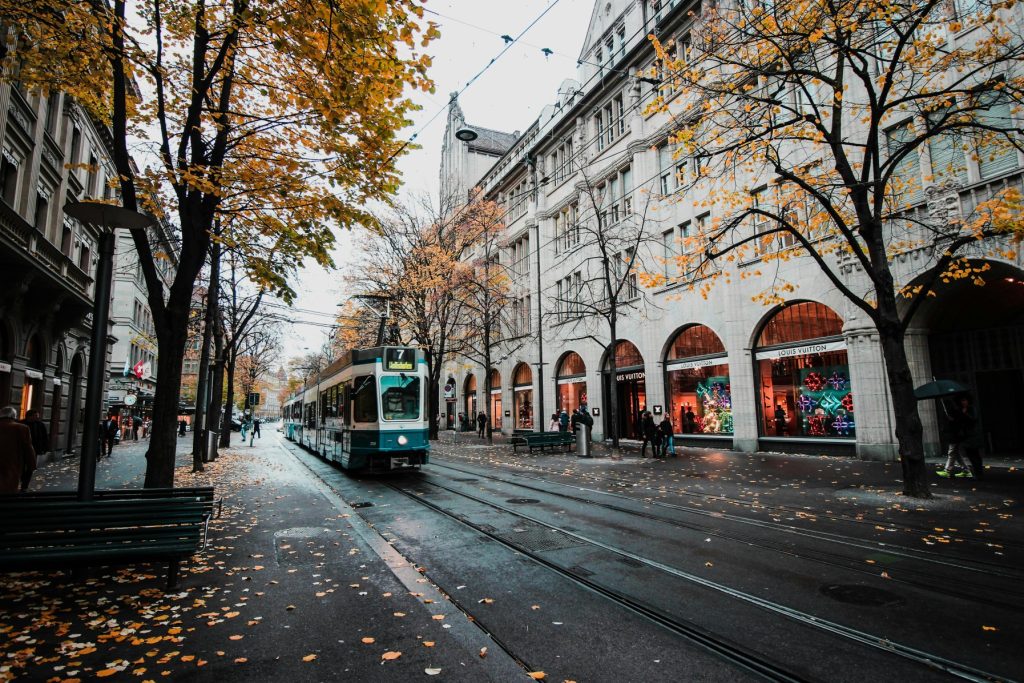
Ever thought of having hot chocolate in the Swiss Alps, or skating past pure blue lakes, or even riding the most scenic trains in the world only to be stopped with the thought of thinking “Switzerland is really too much money”? You aren’t alone. While Switzerland is known for its beauty, high prices also make it notoriously prohibitive for budget travelers. If you know how to plan—like a Switzerland trip planner—and a few tricks, then a trip, even a budget trip, to Switzerland is not only possible, but magical. What’s in this blog Why Switzerland on a Budget? Affordable Travel Tips (Flights, Stay, Food, Transport) Switzerland Trip Itinerary on a Budget (7–10 Days) Travel Essentials Why Plan with The Tarzan Way FAQs Final Thoughts Why Switzerland on a Budget? Switzerland is regularly listed among the most expensive countries in the world. Expensive doesn’t necessarily equal impossible. With options like the Swiss Travel Pass, budget accommodations, and free things to do (mountain hikes, lake views, walkable old towns), you can develop a Switzerland travel itinerary that balances cost and experiences. Using a Switzerland vacation guide or Switzerland travel guide can simplify your planning and help you design a Switzerland trip itinerary that is both cost-efficient and memorable. Cost-Saving Travel Tips ✈️ Flights Book early (6–8 months in advance) for the best deals. Consider flying into an adjacent hub like Milan and taking a budget train to get to Switzerland. Many Switzerland tour packages also include discounted airfare if booked together. ???? Accommodation Hostels and guesthouses start around CHF 35-50/night. Budget hotels average CHF 80-120 per stay, and better deals are available outside of Zurich or Geneva. For couples, Airbnb apartments are a base-bargain compared to hotels in the city. Switzerland honeymoon packages sometimes include cozy mountain chalets at affordable rates. ???? Food Restaurants will empty your wallet faster than anything, so instead: Pick up supermarket meals (Coop, Migros) for CHF 5-10. If you have a kitchen at your hostel, try your hand at self-cooking. Stay away from restaurants—street food and local bakeries are a budget-friendly lifesaver! A Switzerland holiday package that includes half-board meals can also help reduce costs. ???? Transport If you are visiting multiple cities, find a travel network pass called the Swiss Travel Pass if you want unlimited access to trains, buses and boats. If you are in only for a short visit, you can buy Saver Day Passes online. Of course, walking and cycling are free, but many of the cities and towns are pedestrian-only in entirety! For long stays, using a Switzerland travel planner helps compare train, bus, and car rental options. ???? Experiences Free walking tours in cities (Zurich, Lucerne, Bern), provided by locals. Scenic hikes and picnics by one of the countless lakes. Many museums and galleries also have free or discounted entry on certain days. A Switzerland tour guide can also help you uncover lesser-known attractions that are completely free. Budget Switzerland Trip Itinerary (7-10 Days) Sample budget itinerary for the trip of a lifetime featuring breathtaking sites and economical options: Day 1-2: Zurich – Old Town walking, Lake Zurich, museums that are free. Day 3-4: Lucerne – Chapel Bridge, Lake Lucerne, hike Mt. Rigi (included with Swiss Travel Pass). Day 5-6: Interlaken & Lauterbrunnen – valley of waterfalls, low-cost hikes, local guesthouses Day 7: Bern or Geneva – cultural areas and lakeside walks Day 8-10 (optional): Zermatt – views of the Matterhorn, hikes in the alpine, meals as picnics to save money. This could also serve as a Switzerland honeymoon itinerary for couples traveling on a budget, with warm accommodations and incredible train travel to nurture romance. A Switzerland trip guide ensures you don’t miss highlights while staying within your budget. Essentials for Travel April through June or September through October are the best times to go because of the mild weather and cheaper costs. Packing includes a reusable water bottle (tap water is safe), light layers, and comfy walking shoes. Health & Safety: Travel insurance is always a good idea, even though Switzerland is a safe place to visit. Local advice: Learn some French or German greetings; they are very helpful. Always check Switzerland travel packages to see if essentials like SIM cards, passes, or local tours are included. Why Use the Tarzan Way for Planning With so many options and unanticipated expenses, organizing a trip to Switzerland alone can be quite daunting. The Tarzan Way can help with that: A customized trip planner for Switzerland that fits your spending limit. Customized Switzerland holiday packages that include genuine local experiences. Prioritize affordability without sacrificing the highlights. They act as your Switzerland tour guide and Switzerland travel planner combined. Imagine it as your friend who is well-versed in Switzerland, easing the stress of your ideal vacation. FAQ Q. Is Switzerland expensive for travel? Yes, it makes it difficult, but with some smart planning, it will work out. Budget travelers could plan on approximately ₹7,000–10,000 per person/day. Q. Is Switzerland expensive for Indians? It is definitely more expensive than Southeast Asia or Europe, but with the budget option Switzerland travel packages available, Indians will be able to make it with a plan. Q. Is 1 lakh enough for a trip to Switzerland? For a solo traveler ₹1–1.2 lakhs is enough for a 7 day trip if you are staying in budget hotels and taking trains and eating basic meals. Q. How much is the cost for going from India to Switzerland? As of now we are looking at return flight prices between ₹40,000–60,000 for a flight from India (and these should be booked 4-6 months in advance). Q. What is the Switzerland visa fee for Indians? A Schengen visa costs about ₹7,000 for a single person. Q. What is the best month to travel to Switzerland? The best months are April–June (spring) and September–October (autumn) for good weather and prices. Q. How much is a meal in Switzerland? Expect a meal to cost around CHF 20-30 at a restaurant, but



